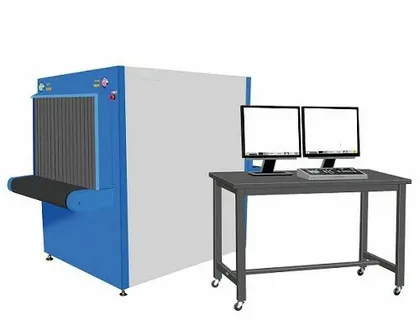
Baggage scanners have become a routine part of air travel, playing a crucial role in ensuring safety and security at airports. However, several myths and misconceptions about these devices persist. Understanding the truth behind these myths can help travellers feel more at ease during the security screening process.
Myth 1: Baggage Scanners Emit Harmful Radiation
One of the most common fears is that baggage scanners emit dangerous levels of radiation. The truth is that these machines are designed to be safe for both passengers and security personnel. Baggage scanners use low-energy X-rays that are regulated and monitored to ensure they are within safe limits. The radiation exposure from a baggage scanner is minimal, much less than what one would receive from a short flight.
Myth 2: Scanners Can Damage Electronics
Another prevalent misconception is that baggage scanners can harm electronic devices such as laptops, tablets, and cameras. In reality, the X-rays used in these scanners do not damage electronic components or erase data. These machines are specifically engineered to scan personal items without causing any harm. Travelers can rest assured that their electronics will remain intact and functional after passing through a scanner.
Myth 3: Baggage Scanners Invade Privacy
Some people worry that baggage scanners invade their privacy by producing detailed images of their personal belongings. While it’s true that scanners create images of the contents of bags, these images are not detailed enough to reveal personal items in explicit detail. The primary goal of these images is to identify potential threats, such as weapons or explosives. Additionally, security personnel are trained to respect privacy and handle all scanned images with discretion.
Myth 4: All Baggage Scanners Are The Same
Many travellers assume that all baggage scanners are identical, but there are actually several different types of scanners used in airports. The most common types include X-ray machines, computed tomography (CT) scanners, and millimeter-wave scanners. Each type uses different technology to detect various threats. Understanding the differences can help travellers appreciate the sophistication and effectiveness of modern security measures.
Myth 5: Baggage Scanners Are Infallible
While baggage scanners are highly effective tools for enhancing security, they are not perfect. Some travellers believe that these machines can detect every possible threat without fail. However, no technology is infallible. Baggage scanners are part of a multi-layered security approach that includes manual inspections and other screening methods to ensure comprehensive safety. It’s important for travellers to cooperate with security procedures to help maintain a secure travel environment.
Myth 6: Baggage Scanners Are A Waste Of Time
Finally, there is a misconception that baggage scanners significantly delay the security process and are an unnecessary hassle. In reality, these scanners are essential for maintaining safety and security. The screening process is designed to be as efficient as possible while still being thorough. The time spent at a baggage scanner is a small price to pay for the peace of mind that comes from knowing that security measures are in place to protect everyone on board.
Conclusion
Understanding the facts behind common myths and misconceptions about baggage scanners can help travellers feel more informed and less anxious about the security screening process. These machines play a vital role in ensuring the safety of air travel, and knowing the truth about how they work can make the experience smoother and more reassuring for everyone.








Thank you for your sharing. I am worried that I lack creative ideas. It is your article that makes me full of hope. Thank you. But, I have a question, can you help me?
[…] of the primary benefits of baggage scanners is their ability to detect prohibited items such as weapons, explosives, and other hazardous […]